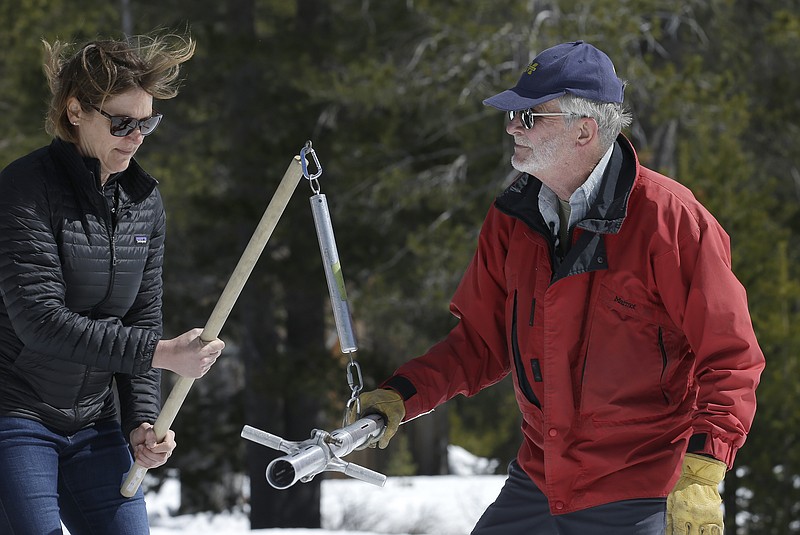PHILLIPS STATION, Calif. (AP) - A stormy close to California's rainy season has slowed the state's plunge back into drought, bringing the vital Sierra Nevada snowpack to just more than half of average, water officials said Monday.
The welcome run of rain and snowstorms last month more than doubled the state's snow totals for the year, hiking it to 52 percent of normal.
Runoff from snow historically supplies a third of California's water, and the April snow survey done Monday typically is the most important for gauging how much - or how little - water California's cities, farms and wildlife can expect after the winter.
"A good March, but certainly not a great March," state snow-survey chief Frank Gehrke told news crews who followed him to the snow-covered Phillips Station for the survey.
Gehrke measured 32.1 inches of snow with a metal rod, one of hundreds of manual and electronic readings the state uses to gauge Sierra snowpack.
Californians may have caught a break thanks to the late-season storms, but "it's not nearly where we would like to be," Gehrke said.
California had only about a quarter of its normal snowpack going into March, typically the last month of the rainy season.
The dry winter sent most of arid Southern California sliding back into drought, less than a year after Gov. Jerry Brown ended the state's drought emergency.
A near-record wet winter in 2016-2017 snapped the previous five-year drought, which triggered a 25 percent water-conservation order for cities and towns.
Despite this year's drier than normal weather, state reservoirs remain fuller than usual thanks to water held over from the previous winter.

